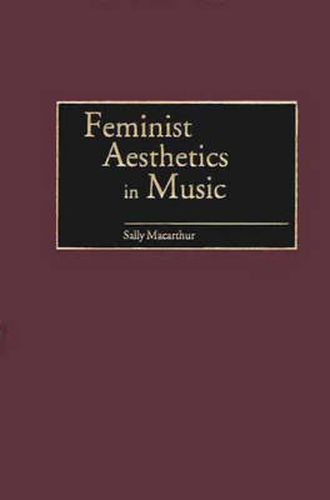Readings Newsletter
Become a Readings Member to make your shopping experience even easier.
Sign in or sign up for free!
You’re not far away from qualifying for FREE standard shipping within Australia
You’ve qualified for FREE standard shipping within Australia
The cart is loading…






Is there such a thing as women’s music ? Do women write and listen to music differently than men do? While recognizing that the differences among women are as distinct as the differences between genders, this bold new study examines gender’s influence on music. The author’s unique analytical strategy shows, in its application to actual musical compositions, that there is a fluid relationship between the music and the analyst, between the text and the context, and that 20th-century music is inextricably bound to notions of gender that transcend aesthetics. Much of the work on women’s music to date has failed to deal critically with the actual compositions, settling instead for more biographical or sociological approaches. In this respect, this work fills an important void. Using many concrete examples and careful analyses of the work of such undervalued composers as Alma Mahler-Werfel, Anne Boyd, and Moya Henderson, it grounds the abstract firmly, and fascinatingly, in the practical.
$9.00 standard shipping within Australia
FREE standard shipping within Australia for orders over $100.00
Express & International shipping calculated at checkout
Is there such a thing as women’s music ? Do women write and listen to music differently than men do? While recognizing that the differences among women are as distinct as the differences between genders, this bold new study examines gender’s influence on music. The author’s unique analytical strategy shows, in its application to actual musical compositions, that there is a fluid relationship between the music and the analyst, between the text and the context, and that 20th-century music is inextricably bound to notions of gender that transcend aesthetics. Much of the work on women’s music to date has failed to deal critically with the actual compositions, settling instead for more biographical or sociological approaches. In this respect, this work fills an important void. Using many concrete examples and careful analyses of the work of such undervalued composers as Alma Mahler-Werfel, Anne Boyd, and Moya Henderson, it grounds the abstract firmly, and fascinatingly, in the practical.